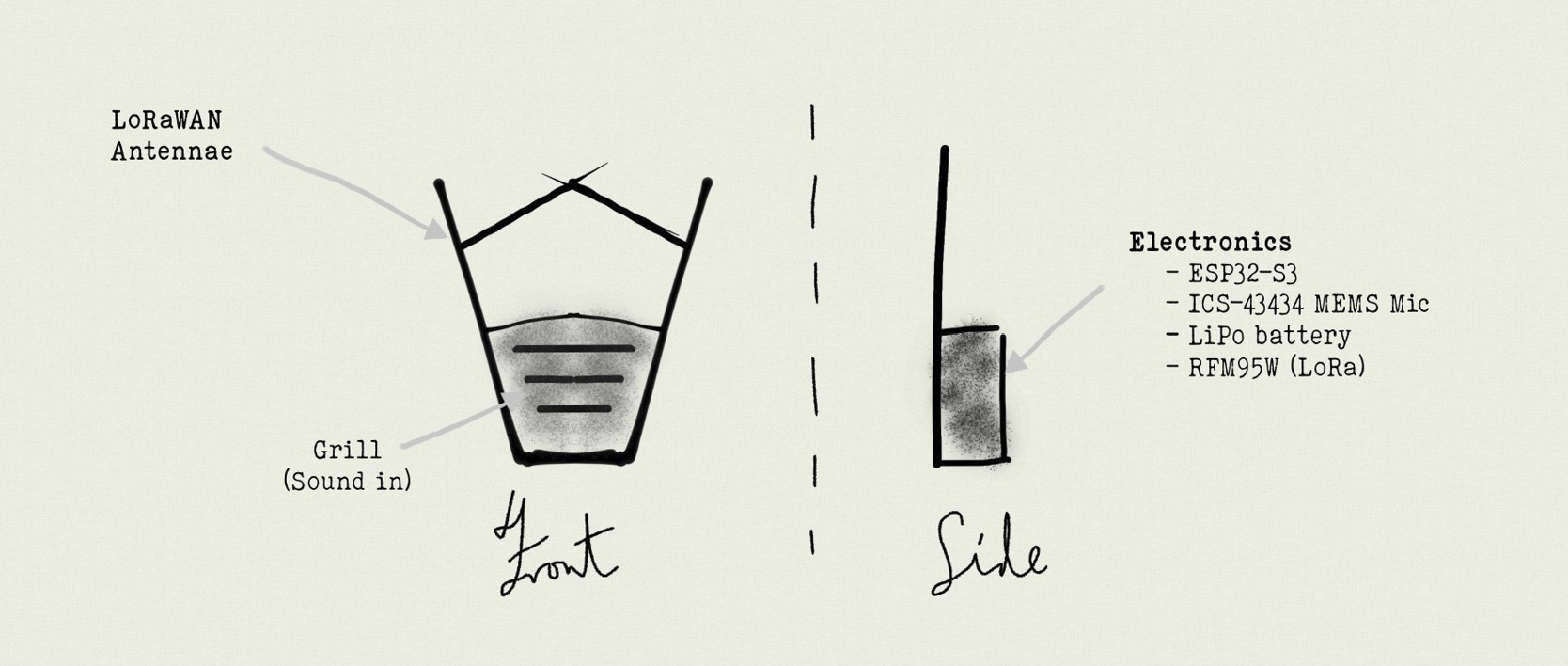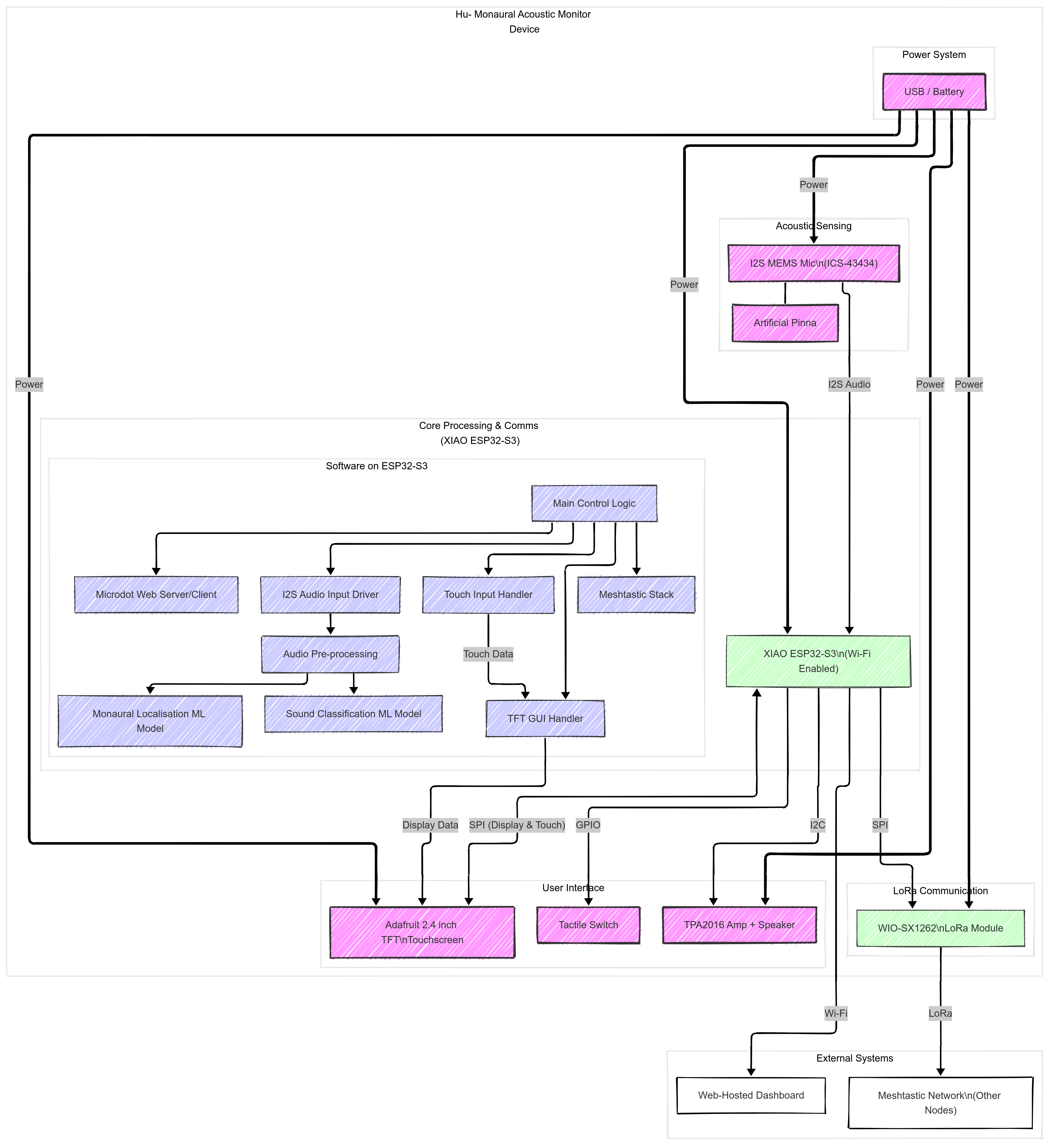Edge Processing
On-device sound classification and localisation aid using Edge Impulse (TensorFlow Lite Micro), reducing data transmission needs and enabling real-time analysis.
A distributed intelligent sensing, classification, communication and learning platform
Hu- is an open-source, distributed intelligent sensing, classification, communication and learning platform designed to sense and communicate information within, between, and across FabLabs. Starting with a combination of acoustic sensor and TFT touchscreen display, the system will learn about the sounds in the Fablab and share this with users in and across the FabLab network. It is hoped that over time, and to meet the needs of various labs, the system will be expanded to include a range of senses and outputs; integrated with LLMs; provide acess to datasets; and increase the complexity of its network.

The conceptual sketch illustrates a single Hu- node
The initial prototype focuses on a self-contained intelligent node capable of local processing and multiple communication pathways. The architecture can be broken down as follows:

Overall system architecture of a Hu- node and its connections.
On-device sound classification and localisation aid using Edge Impulse (TensorFlow Lite Micro), reducing data transmission needs and enabling real-time analysis.
Designed for low-power operation with LiPo battery, with optional solar charging for long-term deployment.
LoRa (via Meshtastic) for long-range, low-power mesh networking and Wi-Fi for higher-bandwidth dashboard communication.
Interactive web platform for exploring and analyzing collected sound data.